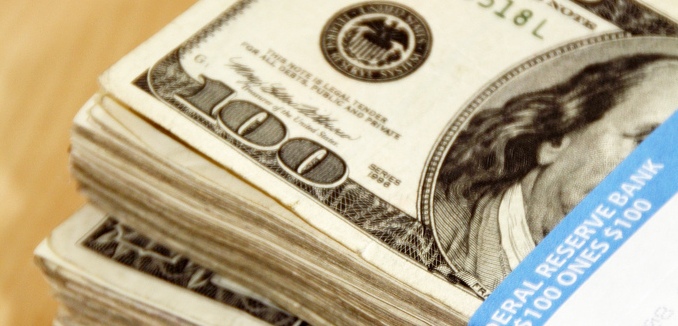The United States sent a $400 million cash shipment to Iran at the same time that four Americans imprisoned in the Islamic Republic were released, The Wall Street Journal reported (Google link) Wednesday, raising concerns that the release of the funds constituted a form of ransom.
In parallel with the nuclear deal that Iran was negotiating with global powers last year, an American delegation with representation from the State Department, CIA, and FBI negotiated with an Iranian team—mostly represented by Iran’s domestic spy agency—over the release of four Americans who had been arrested by Iran. Those negotiations eventually incorporated talks over the release of $400 million in frozen Iranian funds ($1.7 billion if interest was included) that were initially transferred to the U.S. in anticipation of an arms deal that failed shortly before the Islamic Revolution took place in 1979.
With the help of the Swiss and Dutch governments, the United States gathered $400 million in non-dollar currencies, to conform with the U.S. law outlawing dollar transactions with Iran, and flew the cash in crates to Iran. Although the United States hasn’t disclosed when the cash reached Iran, Iranian sources close to the Islamic Revolutionary Guard Corps (IRGC), whose intelligence agency arrested the Americans, claimed that the plane landed January 17, the same day that the four Americans were released.
IRGC commanders boasted that the money represented a ransom payment. “This money was returned for the freedom of the US spy and it was not related to the [nuclear] negotiations,” Brig. Gen. Mohammad Reza Naqdi, commander of Iran’s Basij militia, said in January.
Family and associates of Siamak Namazi and his 80-year-old father Baqer, American residents who were both arrested in Iran after the nuclear deal was signed last July, believe that the Islamic Republic is holding them as leverage in order to gain money or the release of Iranian prisoners. Iran claims to be owed $2 billion in frozen funds, which the U.S. Supreme Court ruled could be used to pay victims of Iranian terror.
The Obama administration has refused to respond to Congressional inquiries about the $1.7 billion payment to Iran except to say that it was not made in dollars. This has led to backlash from Congress, where there a number of bills seeking to block the president from making further payments are being considered.
One of the bills also demands that the administration make public the details of the $1.7 billion payment to Iran. President Obama’s “payment to Iran in January, which we now know will fund Iran’s military expansion, is an appalling example of executive branch governance,” said Sen. James Lankford (R.-Okla.), a co-author the bill. “Subsidizing Iran’s military is perhaps the worst use of taxpayer dollars ever by an American president.”
The administration denies that the payment went to Iran’s military. CIA director John Brennan said last week that “The money, the revenue that’s flowing into Iran is being used to support its currency, to provide moneys to the departments and agencies, build up its infrastructure.” This echoes predictions made last year by Treasury Secretary Jack Lew, who said in April 2015 that instead of funding terrorism, “Iran is expected to use new revenues chiefly to address those needs, including by shoring up its budget, building infrastructure, maintaining the stability of the rial, and attracting imports.” President Obama similarly said in August that “our best analysts expect the bulk of this revenue to go into spending that improves the economy and benefits the lives of the Iranian people.”
But Saeed Ghasseminejad, a research fellow at the Foundation for Defense of Democracies, noted in June that legislation for Iran’s budget calls for the full $1.7 billion to be applied to Iran’s military budget, not for civilian projects.
[Photo: 401(K) 2012 / Flickr ]




